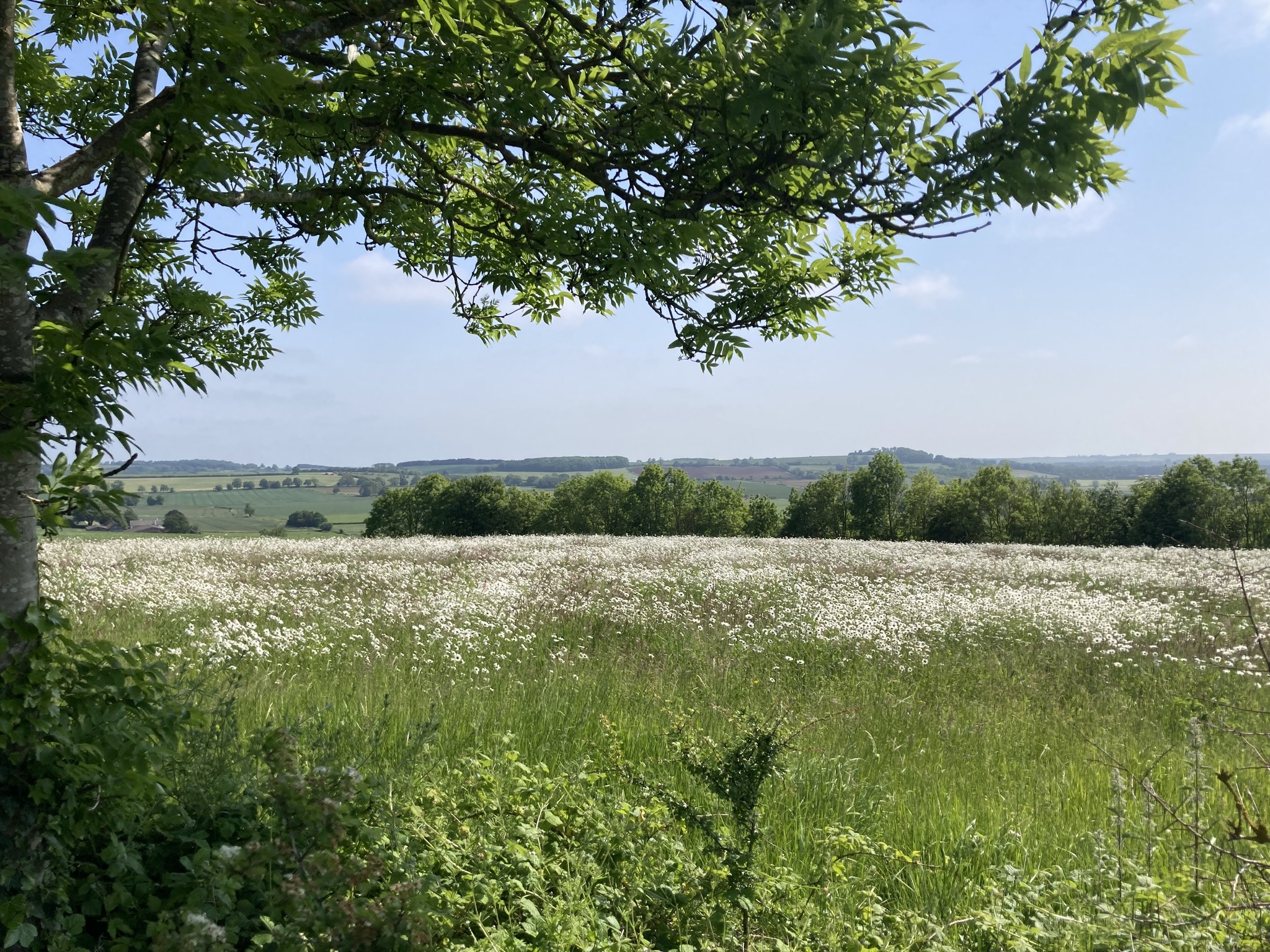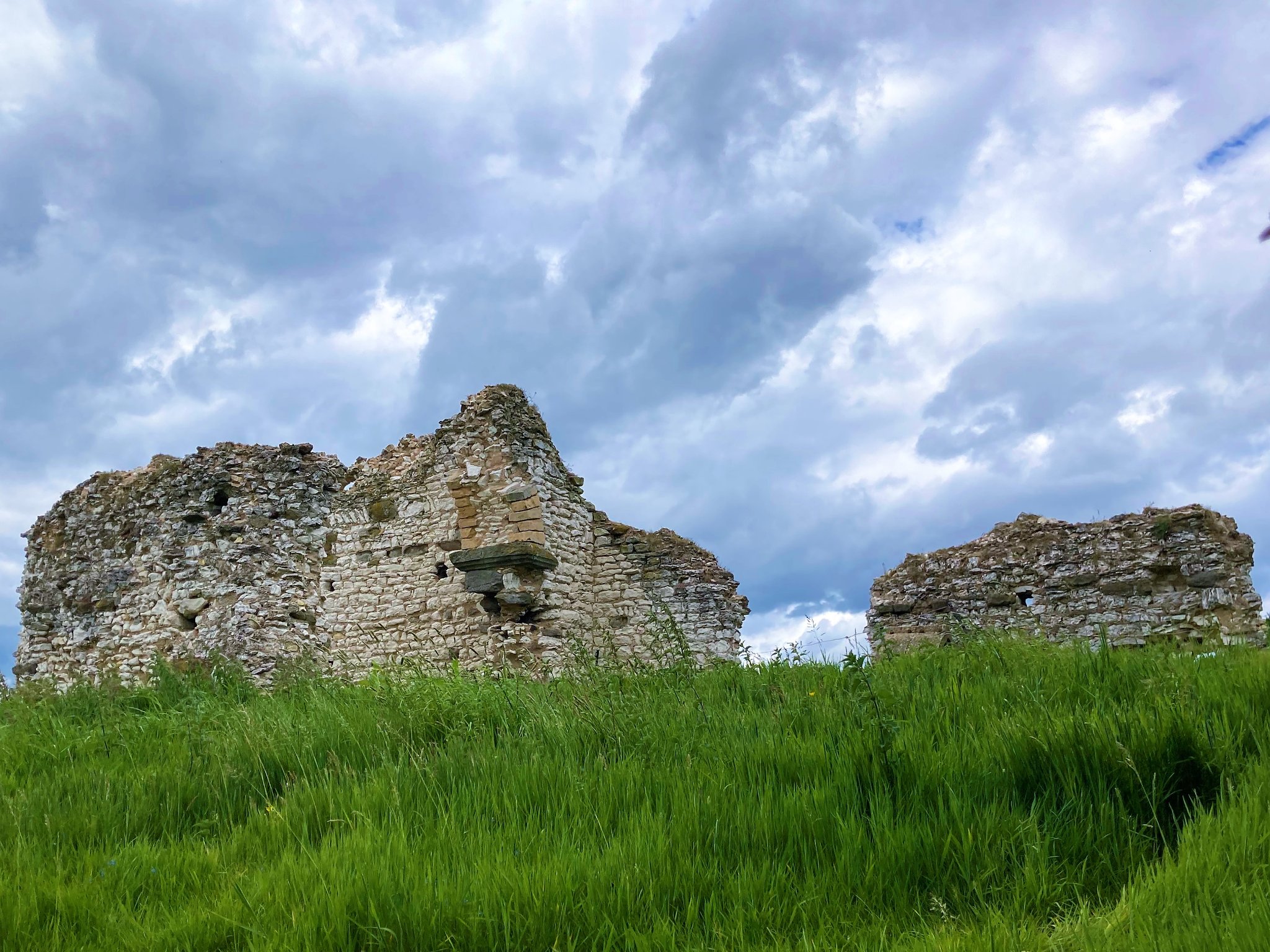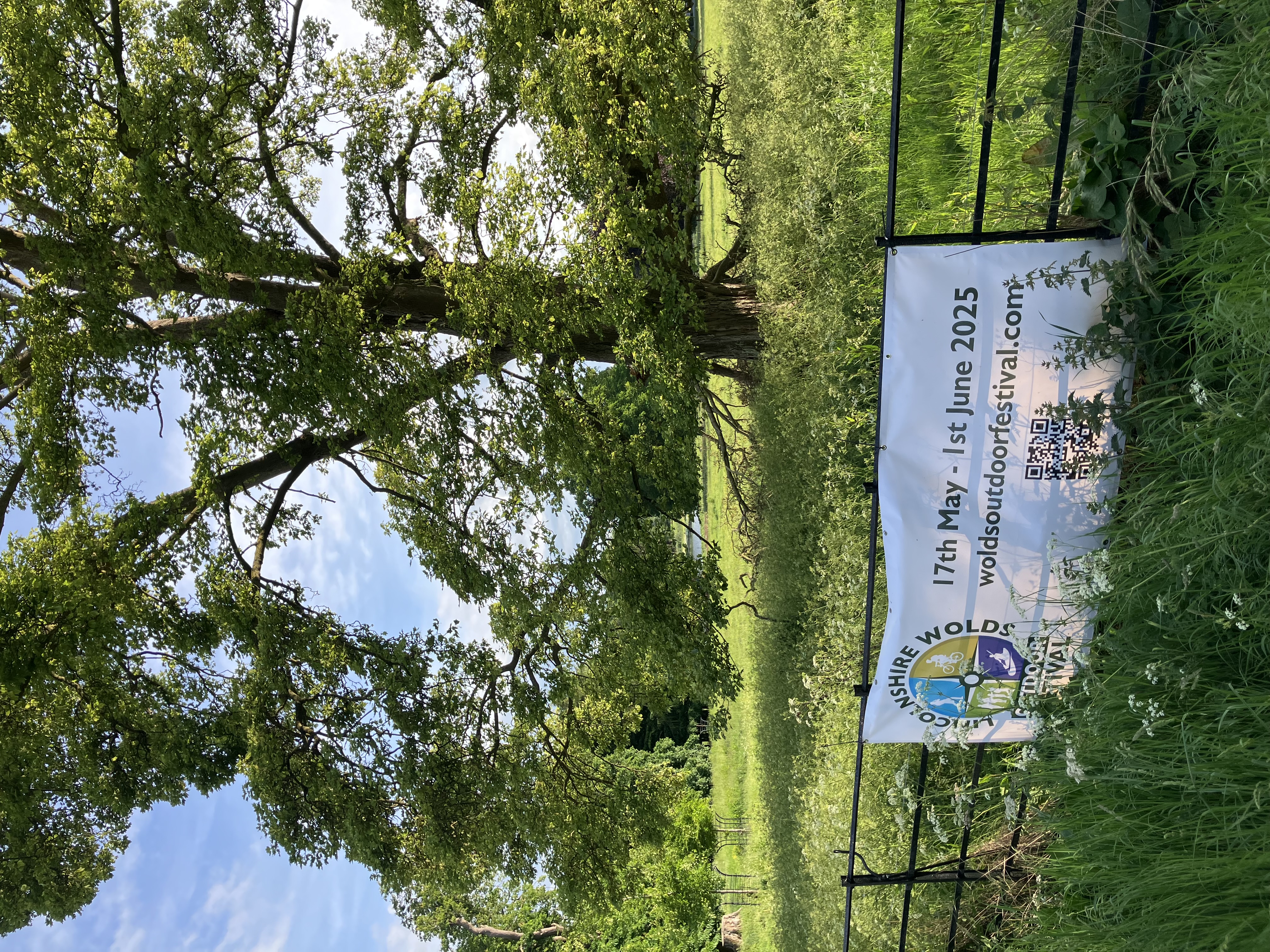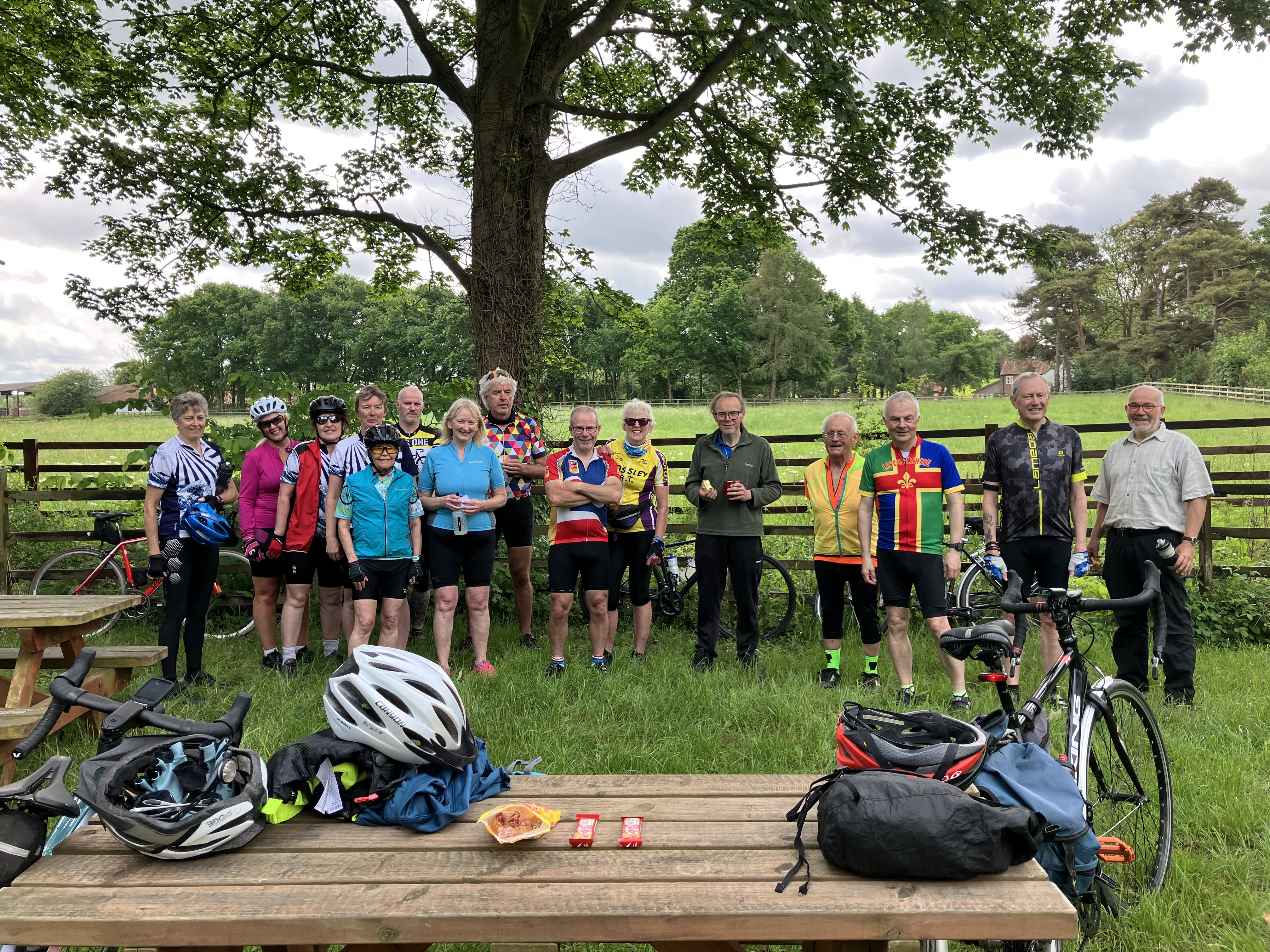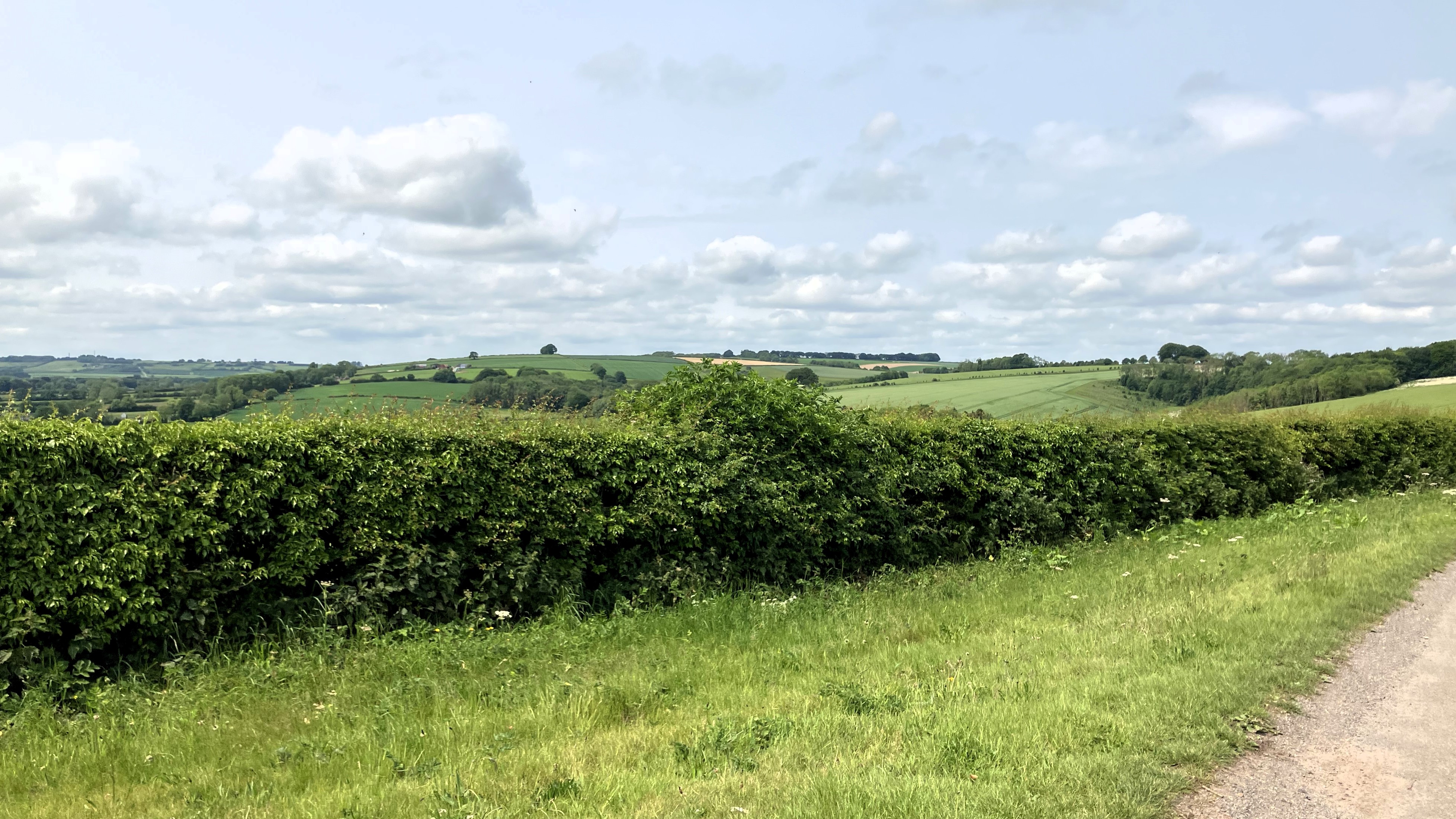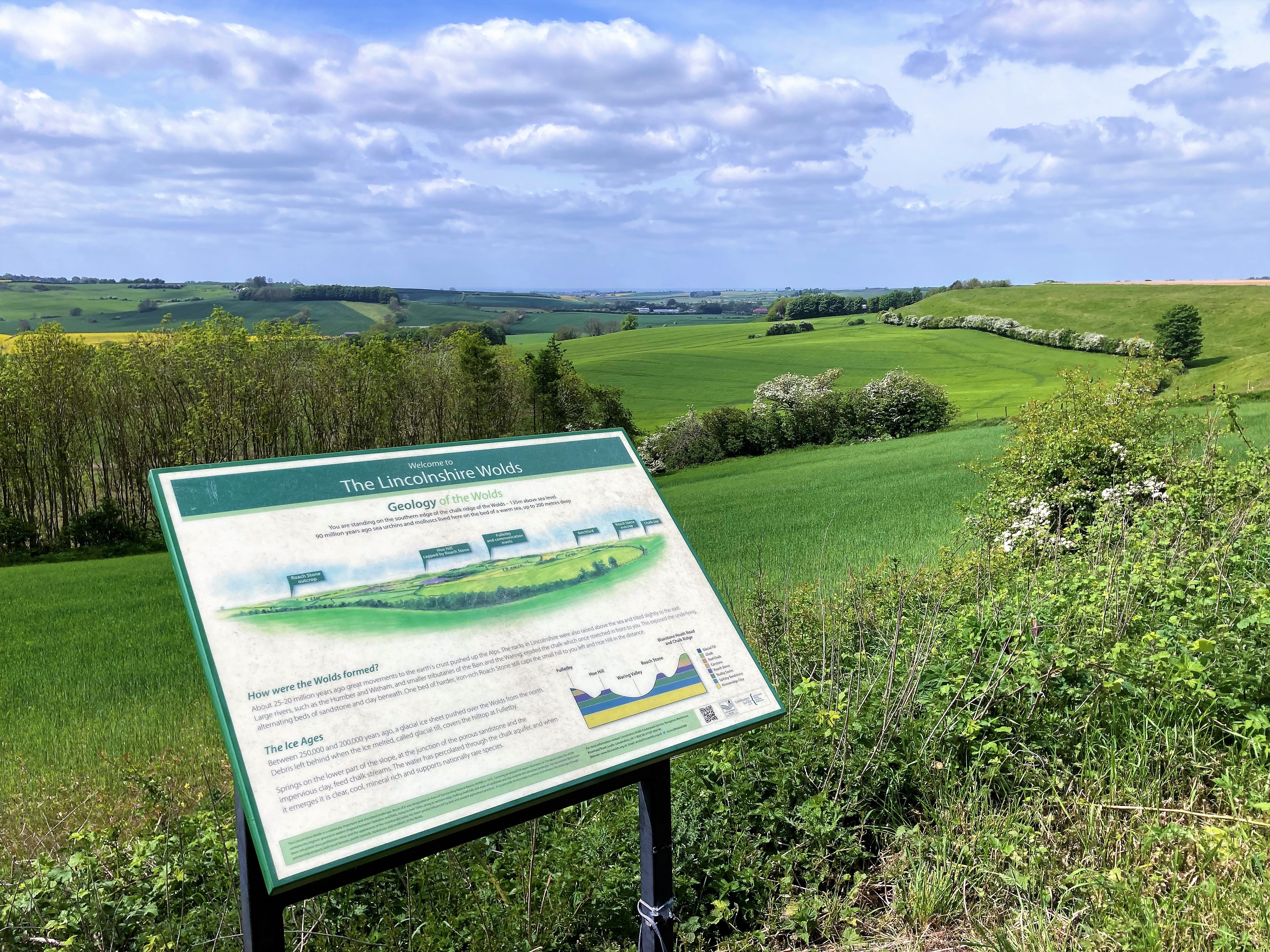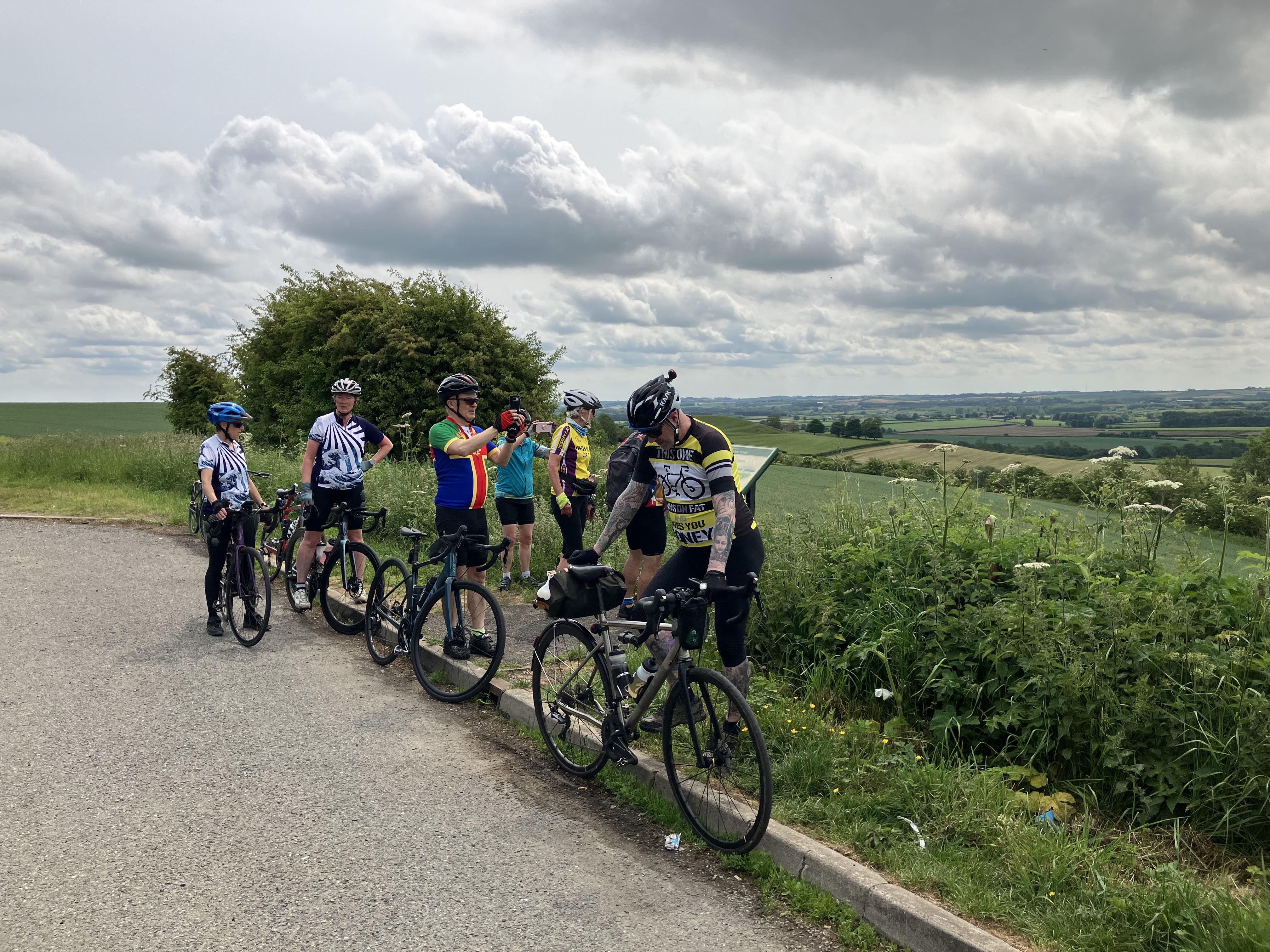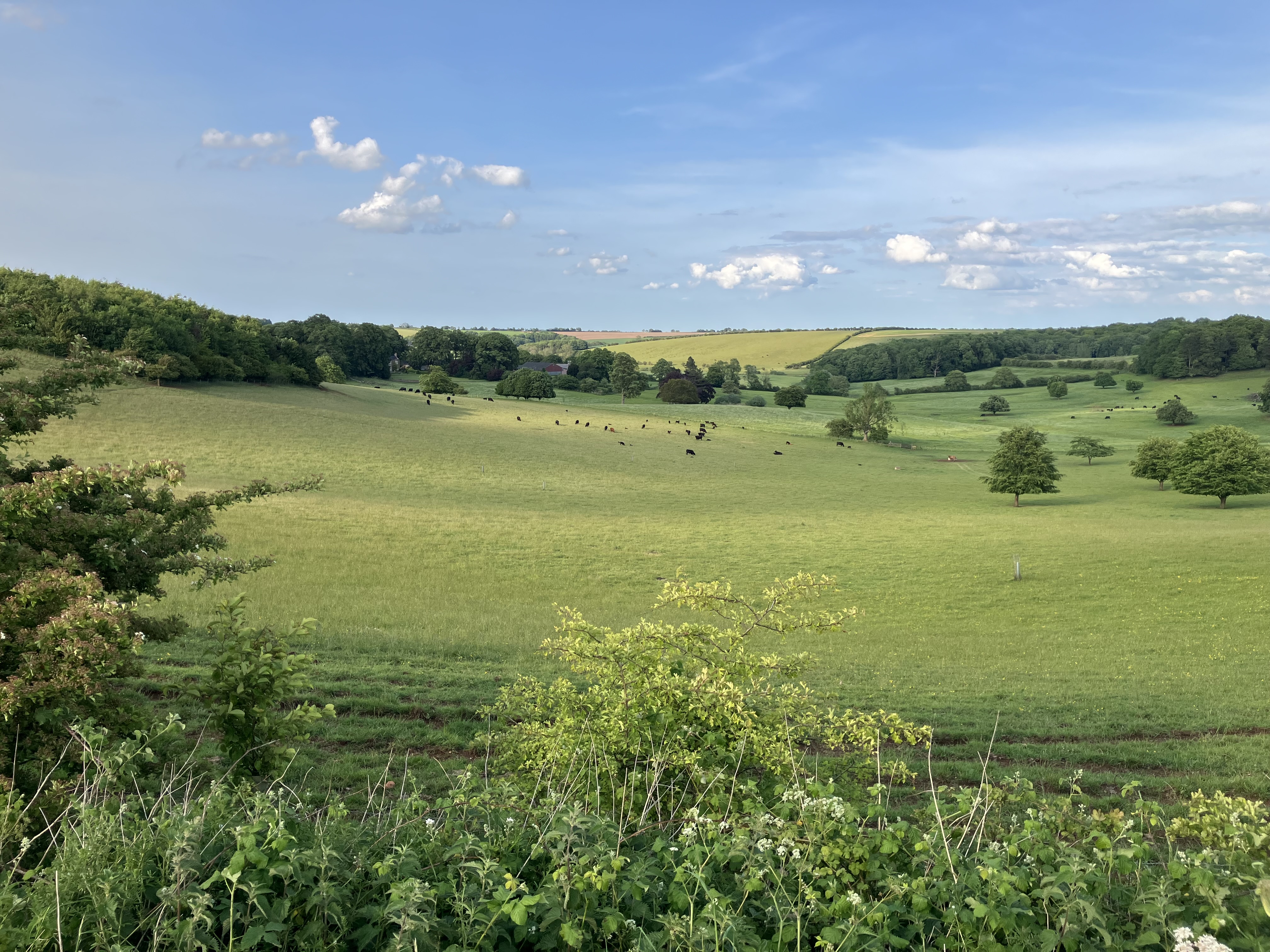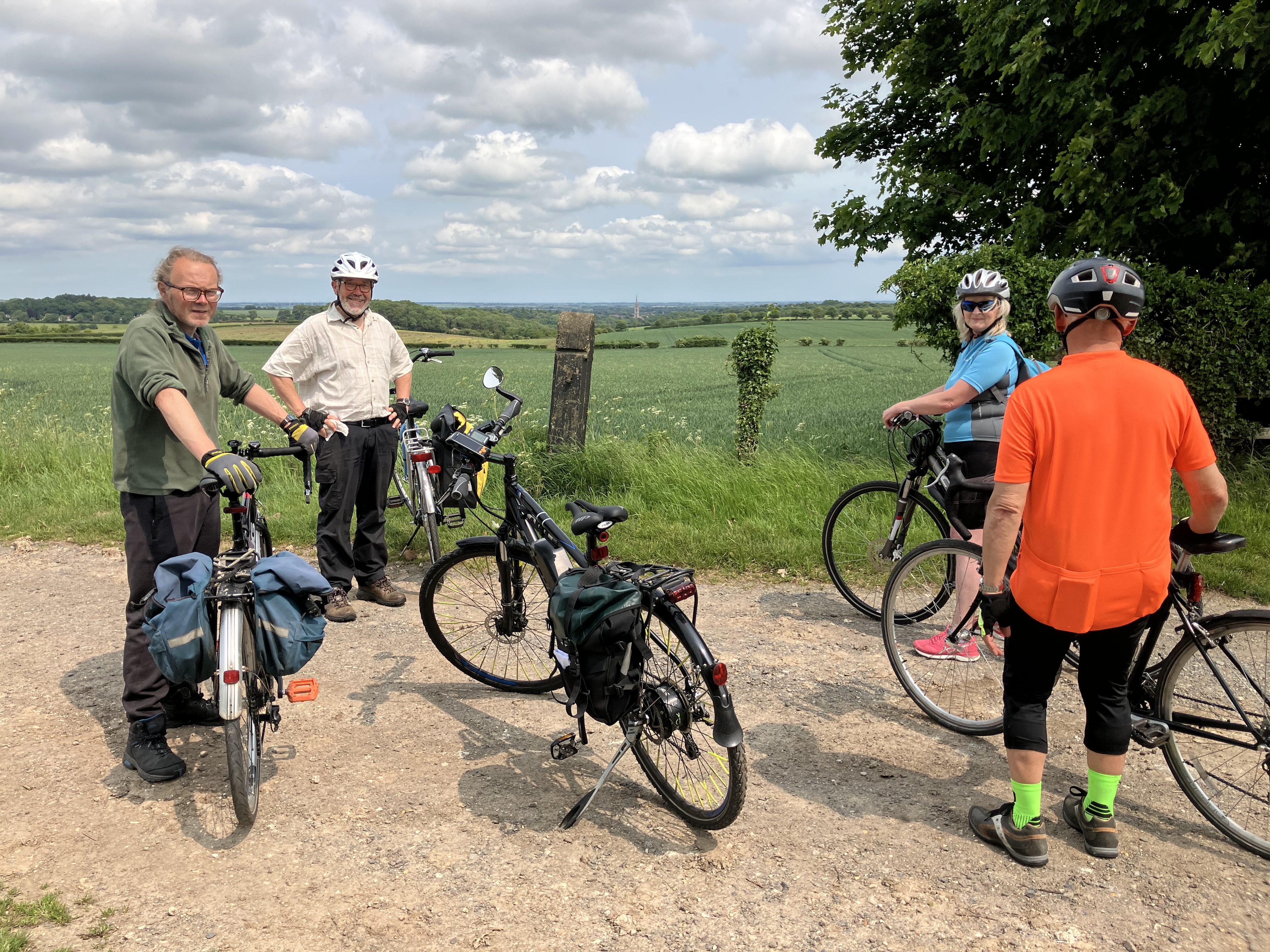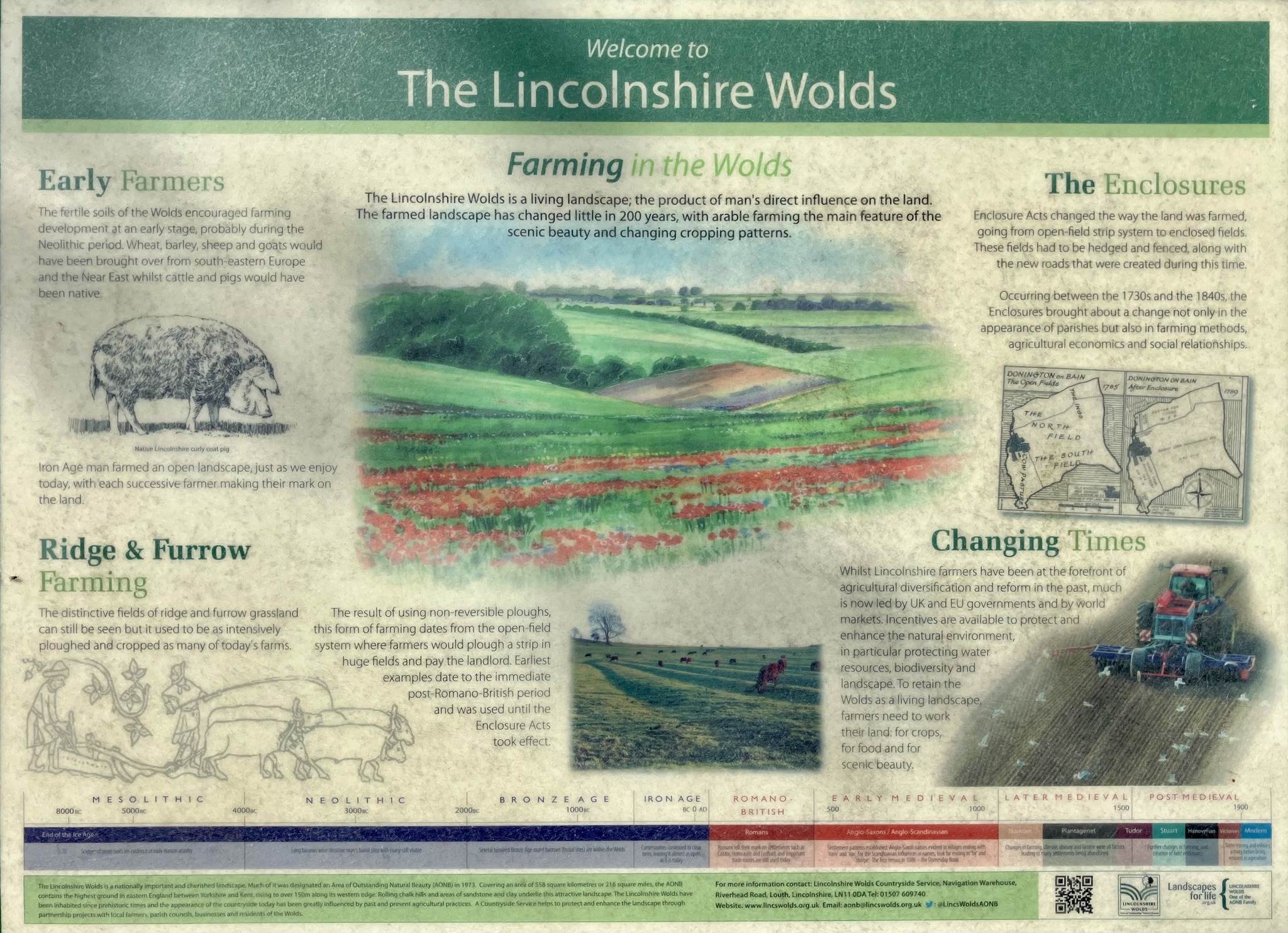Lincolnshire Wolds Outdoor Festival Ride 31st May 2025

Cycling UK Louth - Lincolnshire Wolds Outdoor Festival 31st May 2025
A View of the Wolds by bike:
Cycling UK Louth was once again approached to be an activity provider for the Lincolnshire Wolds Outdoor Festival and so it was that a bike ride was organised aiming to showcase the delights of this Area of Outstanding Natural Beauty (AONB).
Today’s Ride Leader’s Tim Newbery (Cycling UK Louth) and Andy Townhill (Cycling UK Lincoln) were delighted to be joined by Ty Harness, Chris Owen, Paulene Drew, Liz Carter, Penny Bullimore, Tricia Hawkins, Jacqui Ellis, Deborah Morris, visitors Bev Woodward and Simon Woodward (Simon used to live in the area) along with Mark Harrington, Andy Wharfe and Rob Dickens from the Lincoln area. The biggest turnout for this event by far.
Leaving the Cattle Market on Linden Walk promptly at 10.00 am in two groups, we somehow just missed sight of James Pocklington but were very glad that we’d soon meet up en-route. The trickiest part of our ride was perhaps negotiating the roadworks in Newmarket and the turning to Little Cawthorpe but we’d soon be travelling along the boundary of the Wolds through Muckton to Belleau Bridge and the delightful clear chalk waters of the Great Eau. The source of this river, which runs to the coast at Saltfleet Haven, lies along our route at the confluence of Calceby and Swaby Beck.
We would finally enter the Lincolnshire Wolds AONB at South Thoresby, passing by the former Vine Inn. There’s been an inn here since 1508. It’s interesting to think that the chalk ridge of the Wolds formed some 90 million years ago when this whole area was a warm sea. Uplifted and tilted under the influence of the Alps about 25-20 million years ago, a glacial ice sheet moved over the Wolds some 250,000 years ago. This left behind thick glacial clays and tills as the ice retreated. Chalk water springs now occur at the junction of the porous chalk and sandstone and the impervious clay.
At Calceby (‘Calcebi’ Old Scandinavian: ‘Kalfr’s village'), we took time to view the remains of the 11th Century St Andrew’s Church. There used to be a thriving village here in medieval times but the great famine of 1315, the Black Death and the enclosures act and sheep farming saw a steady decline in population. Indeed, the last vicar was instituted at the church in 1724 before the building fell into disuse and was demolished in 1756.
The weather was behaving well at this stage with a light to moderate breeze and some warm sunshine. A steady relaxed pace allowed for pleasant conversation and it wouldn’t be too long before we arrived at the South Ormsby Walkers Hut for our refreshments and a rest. The Grimsby Breeze group had already clocked up plenty of miles riding in from 'Town'. The visits of previous walking groups already this morning had meant that hot drinks were in short supply but chocky bars and jelly babies went down a treat.
The South Ormsby Estate has a long history of several thousand years. Simon Woodward remembers the tales of prehistoric hand axes being discovered on the estate, the lands of which were eventually purchased by Drayner Massingberd in the 17th Century. With the family line now ended, it’s being developed into a thriving ethical and sustainable business by the estate’s new custodians Jon and Jan Thornes. Great to see the herd of ‘Lincolnshire Red’ although some prefer the locally made gin!
Time to get back on the bikes for the gradual ascent of the prehistoric drover’s ’Bluestone Heath Road’, most likely named after the grey/blue glacial erratic boulders that were deposited and left behind once the glaciers retreated. Once an important focal point for ancient communities, one fine example of such a boulder lies outside Louth Museum. This 'Bluestone' is made of volcanic lava from the Whin Sill in Northumberland.
The Bluestone Heath Road would afford us stunning views of the Wolds and we re-grouped to admire the scenery at the Ferrals Plantation viewpoint. We were rewarded with a vista of rich and varied greens and sightings of Buzzard.
We passed turn offs to Belchford and Oxcombe (the area much favoured by Poet Laureate Alfred Lord Tennyson), and splitting back into two groups reached the turning off at today’s highest point of 150 m altitude at Welsdale Top. A descent now all the way to Hallington. There’s a triangulation pillar sited at Hallington Peak, one of several we’d pass by today.
Arriving back in Louth between 1.30 pm and 2.00 pm, Tim and Andy thank everyone who attended for their company. Magnificent support too from several who volunteered their services as qualified Ride Leaders to allow the safe running of this event.
Tim's 'Relive' video: https://www.relive.com/view/veqzdYxpJ7
